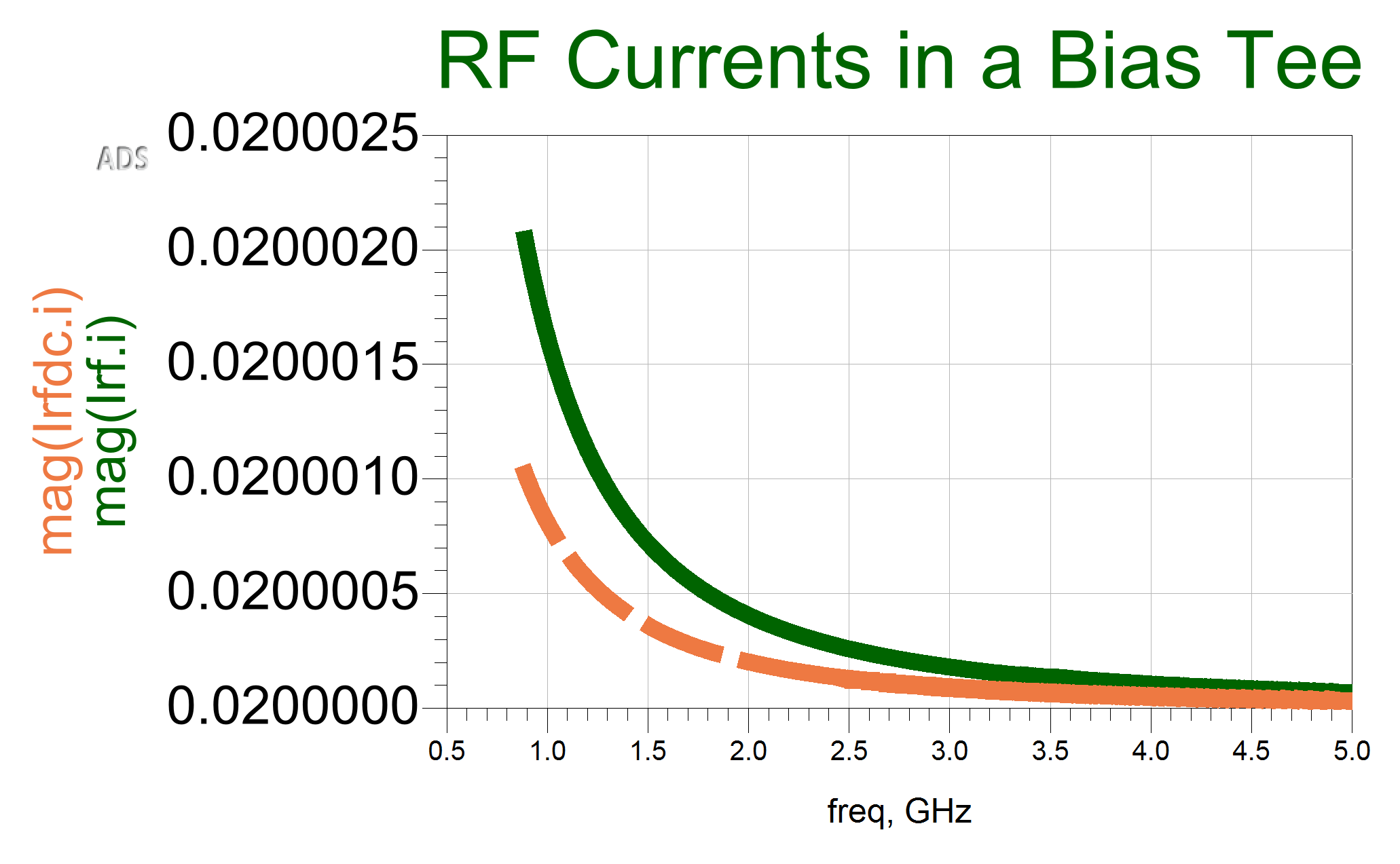I am designing a bias tee here and wondered whether it actually works or not? Hence I conducted an AC analysis instead of S-parameters (after verifying that s parameters are okay). The bias tee has been designed for 900 MHz assuming 50 ohm impedances. So the circuit is as below:
And the resulting currents are as below:
Now, my questions are:
- Why DC current is frequency dependent, it should have been a constant of about \$i=\frac{1 V}{50 \ \Omega}=0.02\ \mathrm A \$?
- Why the output (RFDC) current is smaller than the RF (input) current ? It should have been the addition of both currents, just shifted up by 0.2 A?



